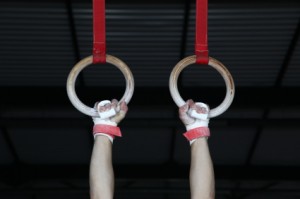Wanted to start off today’s message with a powerful comment from a subscriber.
Logan,
Your website is absolutely fantastic and it has helped me learn a whole new approach to physical-culture training. Over the last few months, I have incorporated handstand push-ups and some elementary handstand training into my weightlifting routine, and the results have been nothing short of incredible.
A while back you received a comment from somebody who was upset that you are putting acrobatic videos on the Internet for all to view. He was apparently concerned that some people may develop bad form or bad training habits without direct supervision from a qualified trainer. While I’m sure this gentleman meant well, I must say that I have benefited enormously from watching the videos you have posted. I suspect that many other people have too.
Viewing your videos and reading your articles helped me to refine my views of what is possible with physical culture training. Before I made a visit to your site, I paid virtually no attention to the athletic side of physical training, and I new very little about the many benefits which can be derived from doing handstands and related movements. I have no desire to become a professional gymnast or acrobat, but I find that the type of training which you promote on your site improves my athleticism and strength tremendously.
Thanks for running a great and innovative site.
Rob Drucker
Thank you, Rob. Comments like these really make my day. It brings a smile to my face to read about the success of people like you.
Handstands have been proven over and over to strengthen the body. If you have to start against the wall, you’ll still get many of the benefits. The truth is going from handstands against the wall to free standing is the transition many people make, myself included.
As far as athleticism though, that is just the beginning. Can you imagine where you’ll be at if you add just a few of the following into the mix?
Forward Rolls, Backward Rolls, Diving, Head and Hand Balancing, Hand Balancing, Forearm Balancing, Cartwheels, Roundoffs, Head and Hand Springs, Hand Springs, Backward Hand Springs, Back Bends, Upstarts (Kips), Somersaults (Flips), Combination Rolls, Combination Hand Springs, Combination Hand Springs and Somersaults, Combination Hand Springs and Rolls, Combination Balancing and Rolls, Miscellaneous Combinations, and Novelties.
Those are the 21 chapters found in the soon to be released Tumbling Illustrated. As of writing this it’ll be available in 4 days, 23 hours, 57 minutes, 34 seconds. To find the updated time go to https://lostartofhandbalancing.com/tumbling.html
I wish it was ready now, especially since a few people have inquired about buying it already. But I’m still waiting on the printers for the main book. Plus I want to be able to ship it out the day you order it.
You don’t have to be a professional gymnast or acrobat to get the benefits of this training. (If you are though, more power to you.) Even if you work on just a few of the 248 different moves you’ll learn how to control your body to a extraordinary degree.
Tomorrow I’m going to reveal a few details on the companion workbook to Tumbling Illustrated and how you can use this workbook will increase your skills even faster.
Good Luck and Good Tumbling,
Logan Christopher
P.S. I’ll try to get another video up showing some acrobatic conditioning in action before the launch. Maybe even a sneak peak of the workbook.





 The first was to practice my hand balancing in one form or another every single day.
The first was to practice my hand balancing in one form or another every single day.
 2. The Equipment.
2. The Equipment.

